-
Author
Finn McCahon-Jones -
Date
18 Apr 2020
Essay
Animacy: Beatrice Brovia & Nicolas Cheng interview
FMJ: Finn McCahon-Jones
CP: Beatrice Brovia & Nicolas Cheng (Conversation Piece)
Finn McCahon-Jones: Your exhibition Animacy currently showing at Objectspace is very theatrical, more like an art installation than a traditional jewellery show. Dimly lit and moody, the exhibition is as much an object as the pieces in it. Can you talk about your exhibition-making process?
Beatrice Brovia & Nicolas Cheng (Conversation Piece): Every element in the exhibition (from the blue light and the intermittent noises, to the black units that act as display, mounts or hanging mechanisms) as well as the jewellery pieces are all interrelated. We work with exhibition making as a way to make visible, at an experiential level, themes and stories that are present in the work. The exhibition becomes a sound box for the works, and vice versa. To us, making an exhibition is a unique possibility of working this way, to make a space for encounter and also resonance.
For Animacy at Objectspace, we worked with blue light, its materiality and even agency, as a main element that would set the tone. There is definitely a gloomy, slightly unnerving connotation. The light is very physical and makes it possible for the pieces not to be revealed immediately but to be slowly noticed. It affects the tempo and perhaps attitude of how we look at things in the context of a jewellery exhibition.
Jewellery is a medium that asks to be observed carefully in an exhibition setting, to fully appreciate the details, the making – ideally through a staged intimate encounter among the viewer, object and space. The space of the exhibition feels intimate, but it is an unsettling intimacy. The works begin to emerge after a sustained or repeated viewing.
FMJ: Yes, when I first entered your exhibition I found that the blue light heightened my experience of the space, I became aware of the exhibition environment as much as the jewellery. Even the standard exhibition fixtures feel like they are part of the installation.
CP: The intention is for the exhibition to become a particular experience of ‘noticing’ (the works, the relations that exist among different elements, possible threads and stories, the space itself.)
To heighten this experience further we have played with mounts and hanging mechanisms and the way that they draw attention to the space: these mounts, shaped like aerials become protrusions of the space. Particularly in an exhibition space like this, which is embedded with all kinds of technology. Everywhere we are becoming more and more reliant on technology, we are drawing the viewer’s attention to this. For example, the smart home, or any contemporary working space, where work is measured, monitored, optimised with the help of a plethora of devices and programs.
We enjoyed talking with Steve Brookbanks who is an extraordinary maker who also made the mounts for our exhibition, about the mount as a specific object, and the general expectation that it should be as unremarkable and discreet as possible. In the exhibition the mounts are not only visible, but also somewhat paradoxical and very active: they draw attention to the corners of the room, start up a dialogue with other elements that are part of the gallery space and typically not meant to be in focus (sensors, detectors, the a/c, the security lights), and, ultimately, to the pendants that they hold.
The large, black display units also play their part in this dialogue and game of references. They recall black boxes, servers, and also early computers and radios that first entered our home and work spaces dressed up as furniture. They are a bit like monoliths, pointing to how essential black boxes have become to our living and interactions.
The blue light is perhaps the most active element: it defines the experience of the space and of the works. We have been reflecting on the quality and omnipresence of blue light during the time of our artist residency in New Zealand; we started to notice how we are constantly exposed to blue light in the domestic and public space. From the Auckland public transport’s night bus interior lighting, to the electrical plugs with a blue LED light signal in the home where we are staying here in Auckland, to the use of blue light-emitting screens found in televisions, smartphones tablets and computers, that we surround ourselves with on a daily basis.
The use of digital display technologies especially during the night, exposes us to considerable amounts of blue light outside normal daylight hours, challenging our circadian drive for sleep at night. This exposure affects our biological system, that of plants and animals. In this exhibition, we wanted to investigate the agency, or rather the animacy, of this particular kind of light, and work with it to offer an immersive embodied experience.
FMJ: Your work appears to be both product and a comment on the anthropocene, society, and the way we consume make a clear distinction between the raw material and the finished product, you are blurring these lines. Am I right to read your work not as a critique of material culture, but a celebration of materiality and industry without notions of good and bad?
CP: For us, it is a genuine curiosity for the ways these materials, their processes and relations to place and context, affect our lives, and bodies – along with those of more-than-human others.
These are the materials of our time, they are connected with everything else. Through working with them and making, we try to understand our own accountabilities in a complex, disrupted world. While also looking for poetry and beauty. It’s never a matter of black/white or good/bad.
FMJ: Yes. I guess if you think stop thinking about waste and raw materials as opposites and just as materials, we have another huge area to explore. However, you told me that it was hard for you to source “e-waste”. How did you come across these materials in the first place, and did you make the Nu-Jade, or is this something from the industry?
CP: We first encountered e-waste as material in 2014-2015, when we started to work on Kino and Gold Rush. In the Gold Rush project, our aim was to discuss gold as a material of our time and its cultural meaning and power - starting with its function and use in today’s industrial production of consumer electronics, as well as for space exploration.
Working with gold, and other minerals and materials sourced from e-waste, we were surprised by the many similarities we discovered between jewellery and electronics, both in their materiality and aesthetics and in the way they function when activated by the body.
In this project, we have been using both domestic and industrial mining methods to extract minerals and other materials from e-waste. It has been a long, ongoing process of sourcing the materials both in Sweden and abroad; processing them partly in our studio and partly in collaboration with specialised companies. We prefer to work with laboratories that maintain a focus on sustainable methods when it comes to e-waste recycling and mining. So we spend time visiting relevant sites, in order to understand accountabilities of exploring the potential of these materials.
The material at the base of the Nu-Jade pieces, similarly to other materials used in our work, comes directly from big electronics manufacturing companies and producers of e-waste. In particular, The Nu-Jade pieces are made from e-waste of circuit boards, a leftover material from the recycling process, after the gold and other metals have been extracted. In a way, it is the waste of the waste.
We have had this particular material in our studio since early 2017, from our first visit to a specialised e-waste recycling company. It took us quite a long time to understand the material properties and its potential. Through hands-on material exploration, failures and attempts at both compounding the material and shaping it through different processes, we have found a way to cast it and carve it. This is a whole process that took place in our studio: we have developed the material, so that it resembles jade, and from it we also make the pieces.
What finally kicked off this project – what gave us the entry point to explore this material – was a personal story: a family heirloom, a jade bangle, suddenly broke after many years of wearing it and never taking it off. In Hong Kong, when this happens, it means that the bangle – a jewellery piece that has an apotropaic function – has served its purpose of protecting the wearer from a potentially harmful event.
FMJ: We have the same idea in Aotearoa around pounamu, it functions both socially and spiritually. I enjoy how you acknowledge both the earth and world contained in the materials you use. I read the Nu-Jade as reconstituted waste, but also understand that even the e-waste was once a raw material from the earth; and just because it is processed, we shouldn’t discount its qualities as a talisman.
Directly opposite the Nu-Jade case is another with necklaces with large pendants that look like they are a draped viscous fabric (if you can get such a thing). They have the most delicate coral-like surface: fine lines radiate around the circumference of the object. How were these made?
CP: The necklaces are part of the second chapter in our collaboration, Façades (2011). The project started with a first visit to a marble quarry in Carrara, Italy: we were blown away by the sight of the mountain, consumed as it was by a relentless extractive activity that has been going on for at least the past 2000 years. It was unsettling to see how the natural landscape has been levelled down – by human forces just as much as, or perhaps even more so than, natural forces – to satisfy our artistic or productive needs throughout the centuries. After our visit, we were wondering if that sense of anthropogenic sublime could be encapsulated in the scale of jewellery.
We visited a group of sculptors based in Carrara, who own the marble quarry and use robotic arms to sculpt the marble, we were interested to see if their advanced technology could work on an intimate scale to produce jewellery. In particular, we have explored a ‘subtractive’ method, combining scans of 3D models we had made, and CNC milling, to mill out soft and translucent shapes from stone (onyx and Carrara marble). The lines you describe are the traces of the making, left by the robot. They aren’t polished away, but become an essential detail, reminiscent of the texture of fabric or a bundle of cloth, and a reminder of the robot whose hand carved the pieces.
FMJ: By blurring the lines between the industrial and the handmade; natural and composite materials I found that I dropped all preconceptions of what a material might be, or its perceived value and found myself focusing on the actual object and how it presented itself to me at that moment.
CP: When we think of what we call material today and how it reaches to our table, no matter if it is ceramic clay or cotton, or a by-product of industrial production like e-waste, we should be aware of the materiality, its relational and performative character: it emerges from the entanglements between entities, scales, place, and more, in a complex world system.
As makers, when we start to realise this, we can no longer think in terms of dichotomies such as human-non-human, handmade-industry, nature-culture, local-global. These qualities start to conflate.
FMJ: I agree. By conflating some of these old binaries we can focus on new material languages. By acknowledging the interconnectedness of materials allows different conversations to take place.
We talked a lot about the provenance of materials. One of your brooches is made from the skin of an Apollo rocket, the jet stone comes from a mine that Queen Victoria favoured for the making of mourning jewellery and you both visited and collected materials from Carrara and the e-waste recycling centres. Is the connection of material to site an important part of your practice?
CP: Yes. It is important, when possible, to work close to the source of the material. It is a way of understanding our accountabilities, as makers and people. The project in Carrara, one of the first in our collaboration, made us realise how removed we normally are from the source of the material when we work in the comfort of our studio; thus we are removed from the impact that a material's extraction, production and consumption has on the landscape.
By opening up the studio scale and practice by making on-site, or visiting other facilities and workshops, we become more aware of how the space influences the making process and its dynamic. How would an industrial space or a natural landscape impact what we would make – the process, the thinking and eventual outcome? But also, what could we learn from others, in terms of local knowledge, resource management and techniques, that we may have not much knowledge about.
FMJ: I get saddened when I see a material like marble enter into fast fashion. Knowing that it took millions of years of earth time to produce, labour and technology to cut and polish, and I can buy a slab to serve cheese on without any knowledge of its origin. I think if people knew the processes involved in making, we would consume differently.
When I contemplate the objects in this exhibition I find myself thinking about ideas of consumer society and how we are removed from realities of making. Is it important that jewellery is able to speak like this? What is your jewellery trying to tell us?
CP: Jewellery as an artistic practice and as a subject that has existed for over a-hundred-thousand years, is entangled and constantly in dialogue with the world around us. That jewellery is able to speak of identities, of the possibility of belonging with others and to a specific place, of remembrance, of personal and collective belief and value systems. This is one of its fundamental qualities.
In our work, we look particularly at the material, its agency, the ways it is sourced or extracted, its interconnectedness with place, people and more-than-human others. Materials at the base of the jewellery come already with their specific histories and narratives: they don’t exist in a vacuum, and, as makers, we work together with or against them, to explore relationships between materiality, things and people, in complex socio-economic networks. The jewellery can relay some of these stories that resonate with us, but it is ultimately up to the viewer and wearer to experience the works on their own terms.
FMJ: Can you tell me a bit about “Conversation Piece” is this the name that you two operate under when you collaborate?
CP: In 2011, we started referring to our collaborative practice as a Conversation Piece, a term that has different connotations. First and foremost, it alludes to an ongoing conversation at four hands, two sensibilities, among the two of us: artists who are essentially different, and yet we happen to carry similar questions, interests and visions.
Historically, Conversation Piece refers to a late 18th century England painterly genre: an informal group of portraits, usually small in scale, showing people in a domestic or familiar setting, interacting with each other or intent in a conversation. Sometimes the figures in these paintings are depicted while discussing over scientific devices and curious objects – conversation pieces of their own.
Another connotation of the term is that of an often unusual or unexpected object that is capable of raising interest, inspiring commentary and thus sparking a debate or conversation. When we initially set out to collaborate together, we were interested to look closely at notions of familiarity and the domestic, what kind of behaviours, norms and values are ingrained in these definitions. This particular genre of paintings captured our attention for another reason: on closer inspection, if we shift the focus from what may seem like a casual, even intimate, depiction of everyday sceneries to the periphery, other stories start to emerge – stories that are, too, enmeshed in this everyday, but that are perhaps most often unnoticed or neglected.
Going back to our joint practice, it is amidst the above-mentioned references and motivations that it started. We particularly refer to and set out to explore processes, jewellery and objects that have the ability to question patterns and habits, and value systems. Through Conversation Piece, we see our collaboration as a possibility to reflect on our common interests or specific questions that we share – that may arise from the field we work in in connection with larger political, social and economic phenomena.
Conversation Piece is an ongoing exploration that enables us to study interconnectedness and interdependency, beyond the command of one single author or maker. So, moving on from the ideals of self-reliance and independency implied in the single author vision, to a sense of interdependency implied in the idea of collaboration.
Beatrice Brovia and Nicolas Cheng are visiting New Zealand on the Blumhardt Foundation's inaugural residency. Their exhibition Animacy was held at Objectspace's Chartwell Gallery during this time.
--
Beatrice Brovia (Italy/ Sweden) and Nicolas Cheng (Hong Kong/ Sweden) are jewellery artists, researchers and cross-disciplinary makers based in Stockholm, Sweden.
Brovia received a BSc in Interior Architecture from Politecnico di Milano, and an MFA in Jewellery and Corpus from Konstfack, in 2009; since 2013 she has been working as lecturer on art jewellery at Ädellab, Konstfack, where she is currently head of the Bachelor Program.
Cheng graduated with a BA from the Design Academy Eindhoven in 2006, and earned his MFA in Jewellery and Corpus from Konstfack in 2010. In 2019, he obtained his PhD in Crafts from the University of Gothenburg.
While maintaining an individual studio practice, in 2011 Brovia and Cheng co-founded Conversation Piece in Stockholm, a collaborative artistic practice with a main focus on jewellery, materiality and craft discourse. Conversation Piece was awarded the First Prize (professional category) - New Traditional Jewellery at the 2014 Sieraad Art Fair, and the Bronze Prize at the 2015 Cheongju International Craft Biennale. Their collaborative work has been published and exhibited internationally, among venues such as Triennale Design Museum (Italy), MAD – The Museum of Arts and Design (United States of America), Design Miami and Basel (United States of America/ Switzerland) and The Dowse Art Museum, (New Zealand).
Finn McCahon-Jones is a curator/ researcher with a professional background in museums. He was previously the director of Te Toi Uku Crown Lynn & Clayworks Museum, and a curator at Auckland Museum specialising in the decorative arts. He currently freelances in the arts sector.
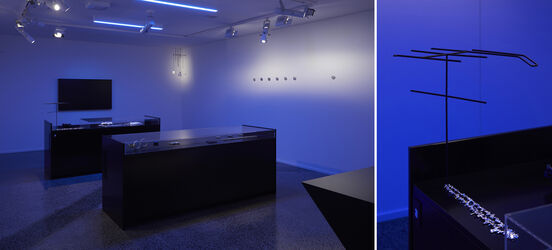
Beatrice Brovia and Nicolas Cheng, Animacy, 2020. Image: Samuel Hartnett
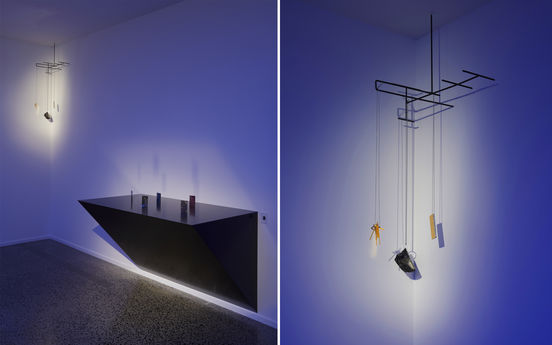
Beatrice Brovia and Nicolas Cheng, Animacy, 2020. Image: Samuel Hartnett.
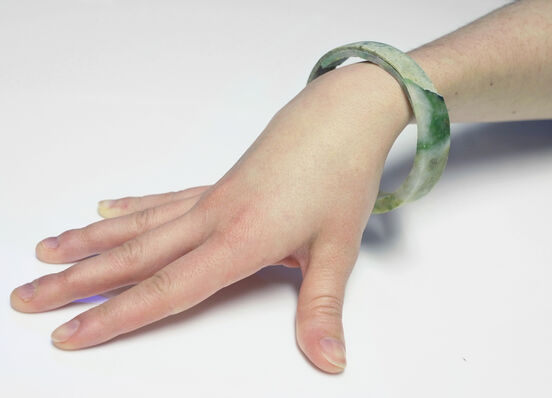
Beatrice Brovia and Nicolas Cheng, Nu Jade, bracelet, 2020. Materials: jade, shredded plastic & gold recovered from CPU boards
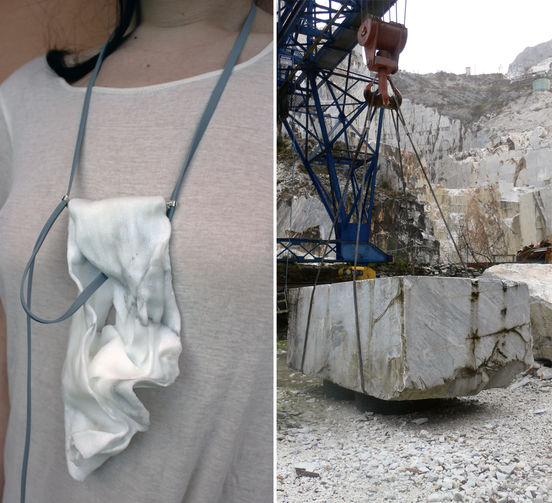
Beatrice Brovia and Nicolas Cheng, Facades Involucrum IV, necklace, 2011. Materials: Carrara marble, silver, PVC.
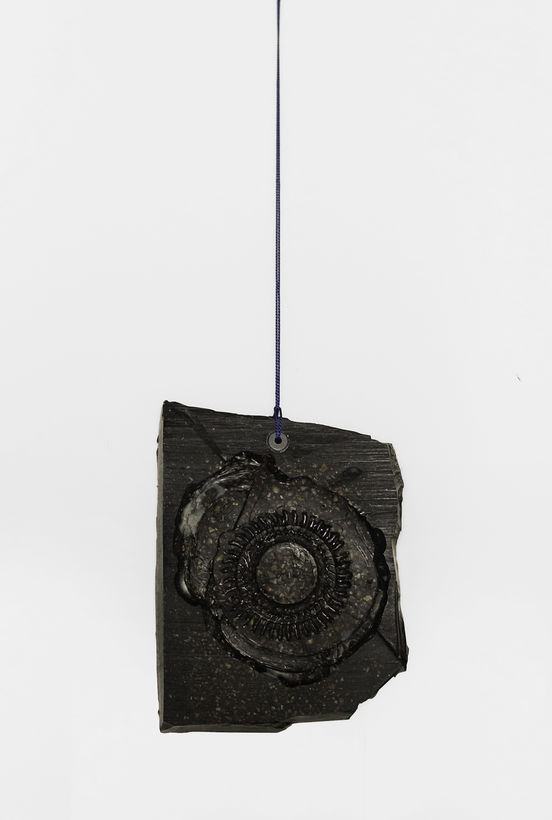
Beatrice Brovia and Nicolas Cheng, Black Box, pendant, 2020. Materials: jet (lignite), ferrite, silk.
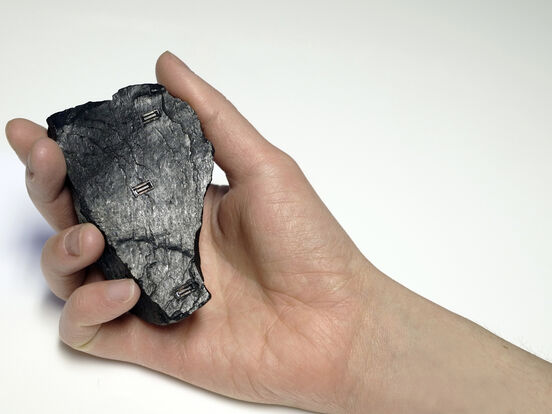
Beatrice Brovia and Nicolas Cheng, Black Box brooch, 2020. Materials: jet (lignite), silver, gold-plated connector pin.
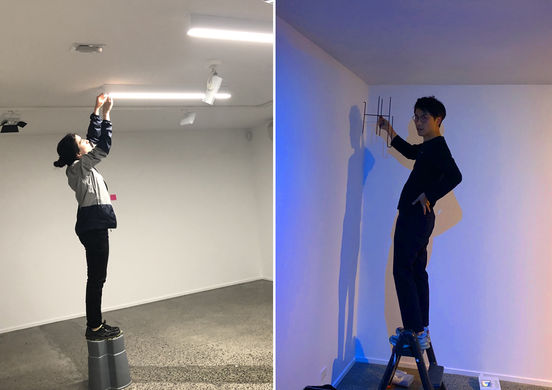
Beatrice Brovia and Nicolas Cheng installing at Objectspace